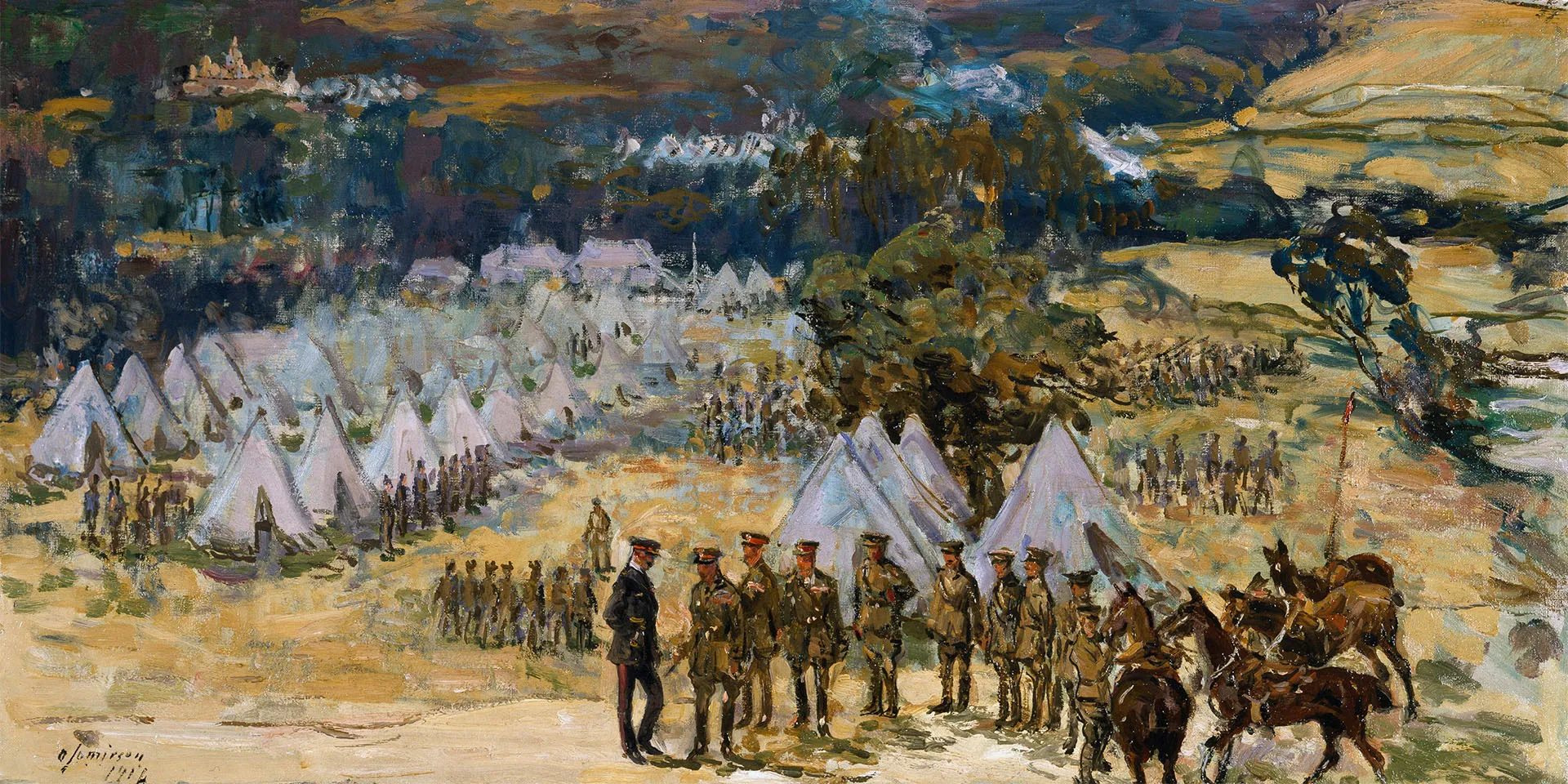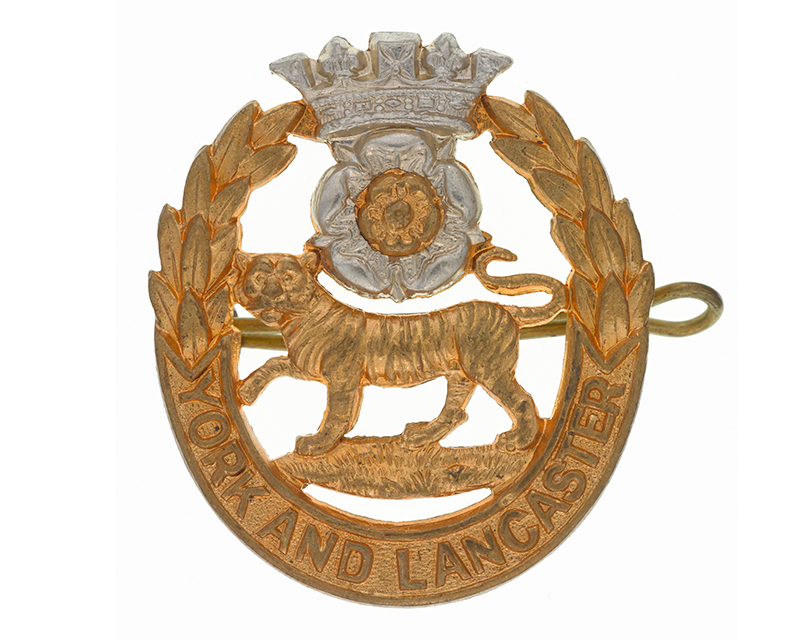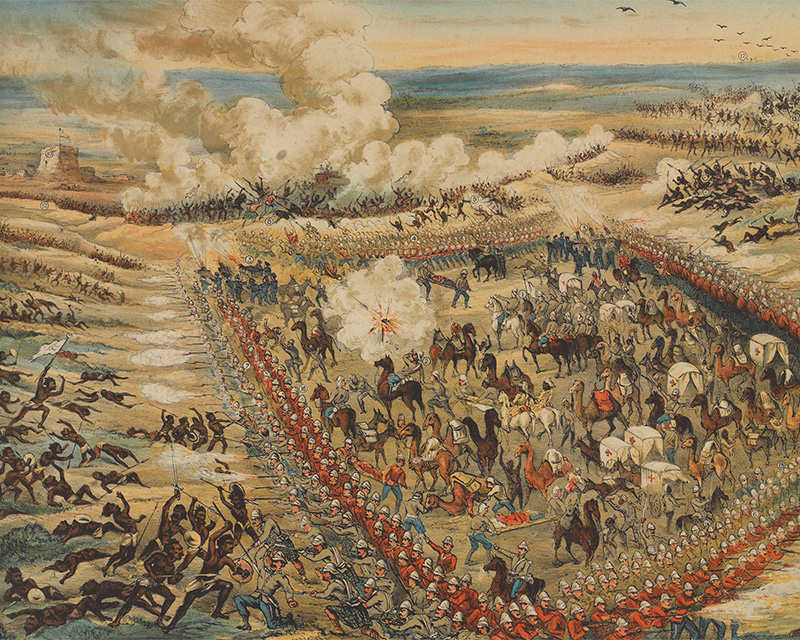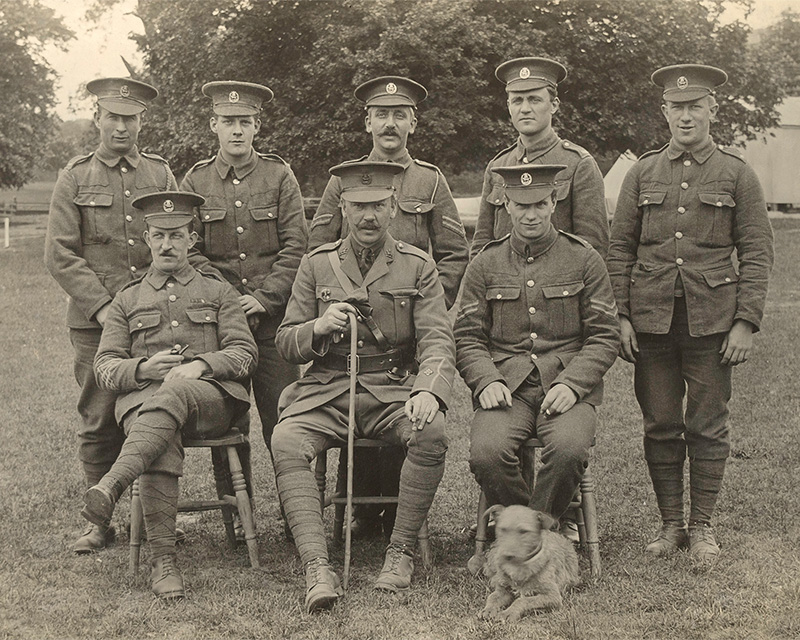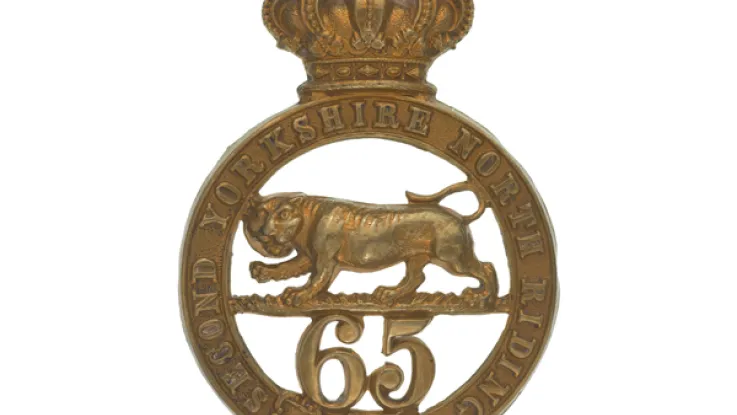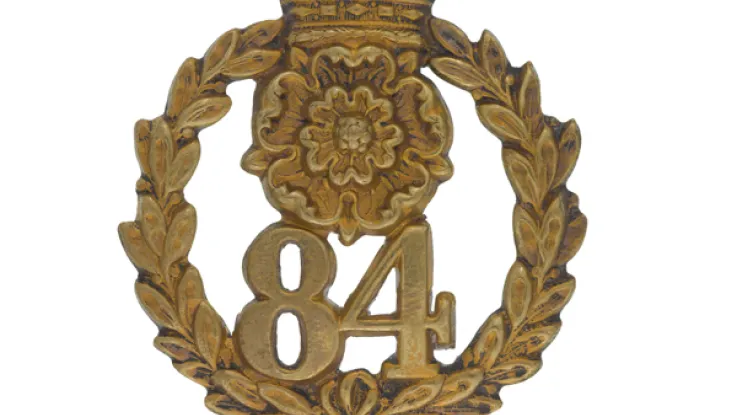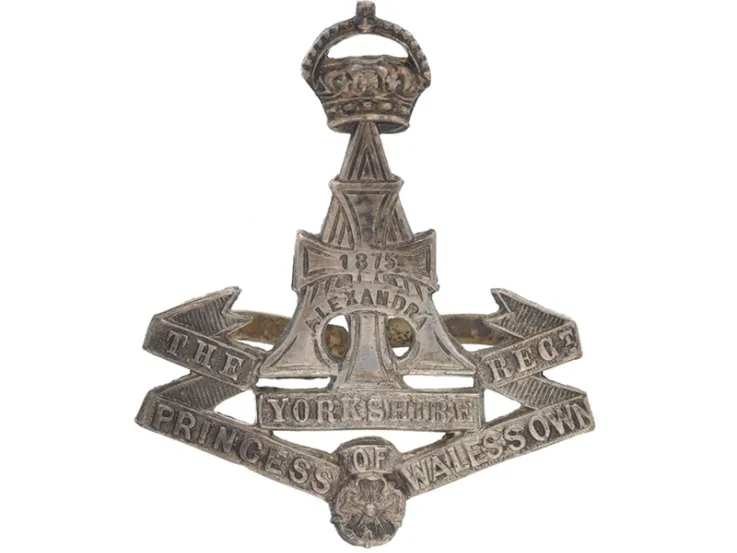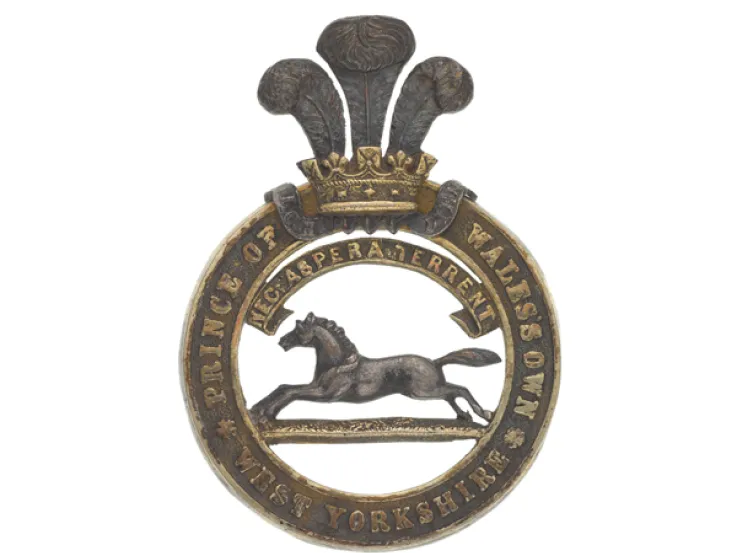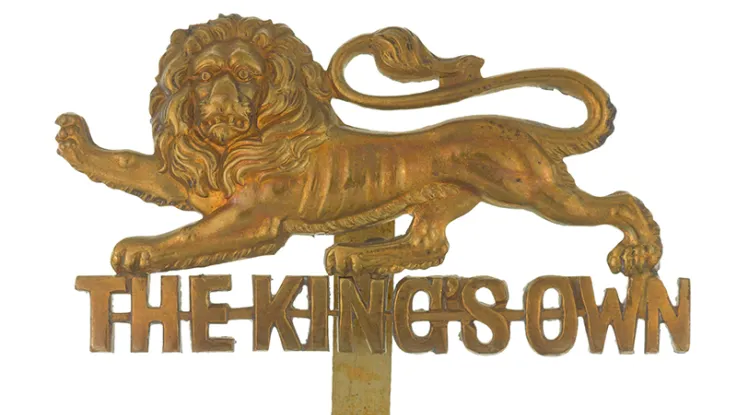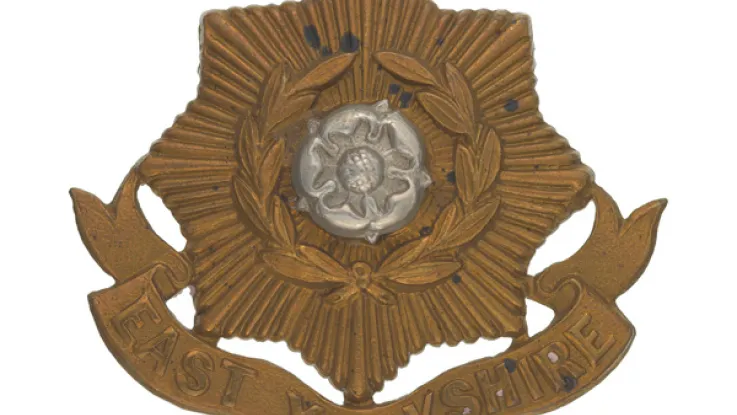Origins
This regiment was formed in 1881 by merging the 65th (2nd Yorkshire, North Riding) Regiment of Foot and the 84th (York and Lancaster) Regiment of Foot. These became the new unit’s 1st and 2nd Battalions respectively. Unusually, it adopted the junior regiment’s title.
Early deployments
2nd Battalion immediately deployed from Ireland to Egypt, fighting at Tel-el-Kebir in 1882. It then spent the rest of the decade in Bermuda, Nova Scotia and the West Indies.
1st Battalion was in India at the time of the amalgamation. The following year, it moved to Aden, and then on to the Sudan in 1884, fighting at the Battle of El-Teb. A few months later, it arrived back in Dover, beginning a 15-year spell in England and Ireland.
In 1891, 2nd Battalion began six years in South Africa, before travelling to India on board the troopship ‘Warren Hastings’ in 1897. It was shipwrecked off the island of Reunion en route, but all its men survived.
1st Battalion deployed to South Africa in 1899, fighting throughout the Boer War (1899-1902), including the Relief of Ladysmith. At the end of the conflict, it replaced 2nd Battalion in India.
First World War
The regiment's 2nd Battalion arrived in France in September 1914, going on to fight in many battles, including the Somme (1916) and Passchendaele (1917). It spent the entire war on the Western Front.
On returning from India, 1st Battalion deployed to the Western Front in early 1915, fighting at Ypres (1915) and Loos (1915) before shipping out to Salonika in early 1916. It remained there until the end of hostilities. The regiment also raised 19 Territorial, Reserve and Service battalions. These served at home and in France and Flanders.
1st Battalion spent most of the inter-war years in England, also serving in Ireland, Germany, Northern Ireland and Egypt. Meanwhile, 2nd Battalion spent this period in India, barring three years in Iraq from 1919 to 1921.
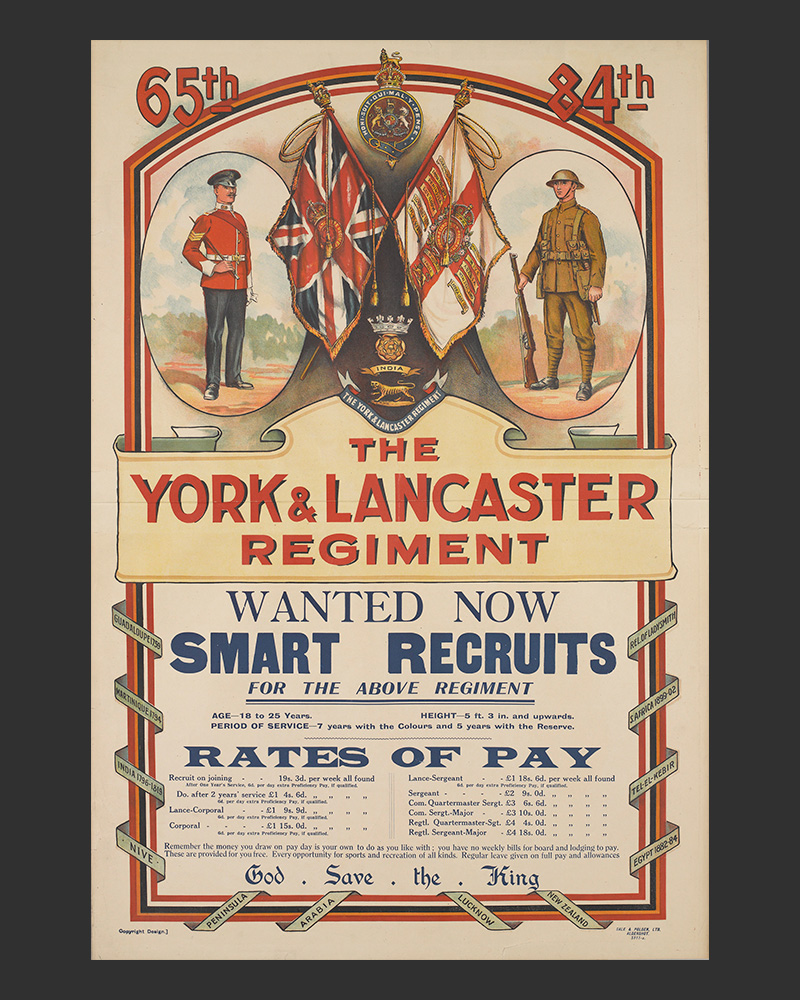
Recruiting poster, The York and Lancaster Regiment, 1920
Second World War
On the outbreak of the Second World War (1939-45), 1st Battalion spent seven months in northern France. It then fought in Norway for 14 days in the spring of 1940 alongside the regiment’s territorial Hallamshire Battalion. Altogether, the regiment raised eight territorial battalions for the conflict, five of which served in Burma.
2nd Battalion moved from India to the Middle East in 1940, fighting on Crete in 1941. Both regular battalions moved to India in 1942, with 2nd Battalion fighting in Burma until 1945 and 1st Battalion moving on to Iraq and Persia (now Iran) later in 1942.
1st Battalion then moved to Egypt in 1943, fighting in Sicily and Italy in 1943, returning to the Middle East in 1944, and finally seeing action in North-West Europe from March to May 1945.
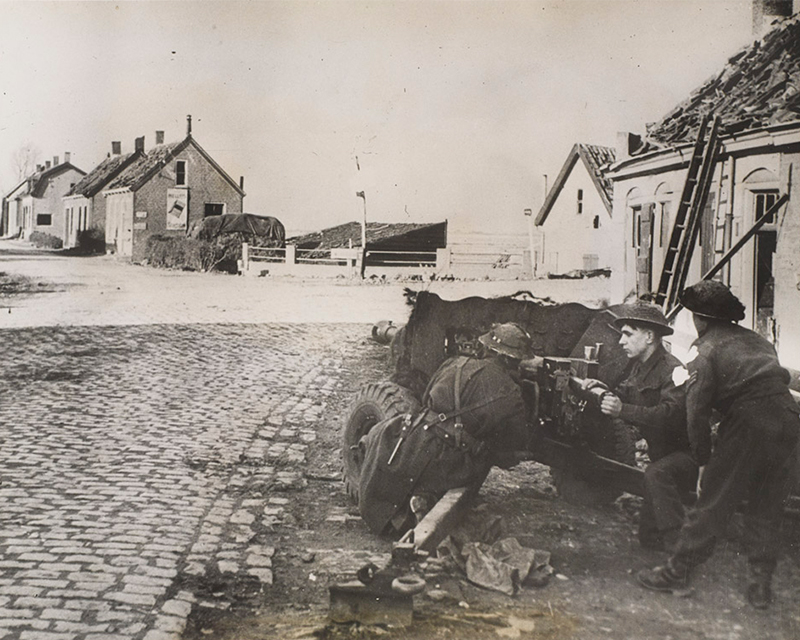
Anti-tank crew of the 4th (Hallamshire) Battalion, The York and Lancaster Regiment, Holland, 1944
Post-war deployments
The two regular battalions were merged in 1948. The regiment then garrisoned Germany with the British Army of the Rhine until 1952, when it was sent to Egypt again. It fought in Suez in 1956, regrouping in England for two years before moving to Aden and then West Berlin. Its final overseas posting was to Cyprus from 1966.
Legacy
In 1968, it became one of only two infantry regiments in British Army history to choose disbandment rather than amalgamation. The other was The Cameronians (Scottish Rifles).
As a result, it has no regimental successor in the regular army. However, a single platoon within the Army Reserve's 4th Battalion The Yorkshire Regiment - a descendent of The York and Lancaster Regiment’s territorial Hallamshire Battalion - continues its traditions.
Regimental museums
The National Army Museum works with a network of Regimental and Corps Museums across the UK to help preserve and share the history and traditions of the Army and its soldiers.
Discover more about The York and Lancaster Regiment by visiting Clifton Park Museum in Rotherham.

